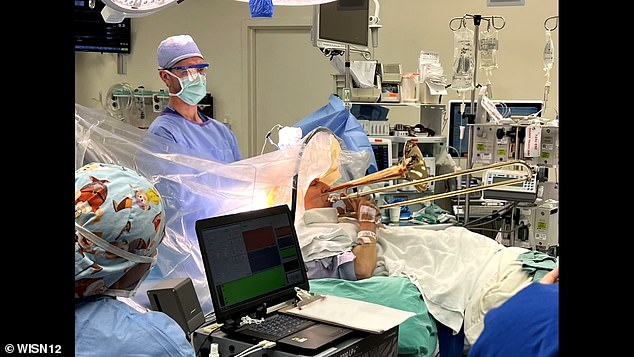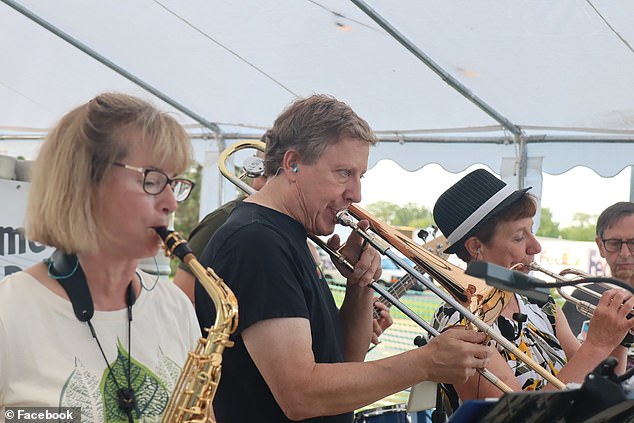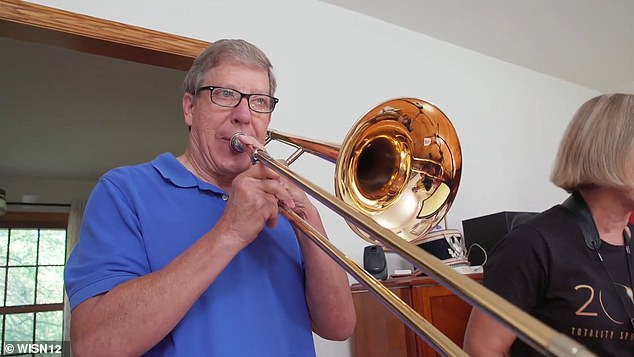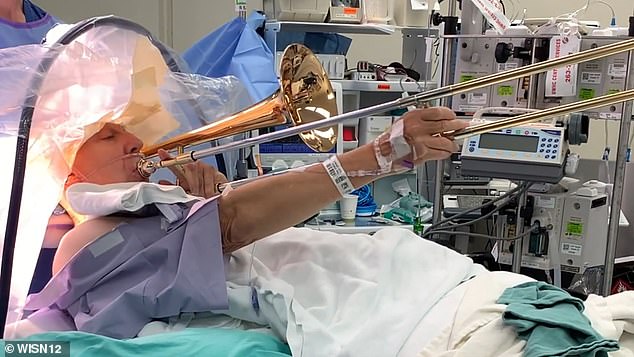A Wisconsin brain surgery patient surprised doctors when he played the trombone during surgery to make sure the procedure was working.
Brian Rust began to notice a severe tremor in his hand that began to affect his trombone playing and his ability to hold his grandchildren.
I had been playing trombone since I was 15 in high school.
Doctors diagnosed Rust with intention tremor (an involuntary muscle contraction that occurs during voluntary movement) and prescribed him medication and scheduled physical therapy.
When those methods stopped working, he was scheduled for brain surgery at UW Health in Madison, Wisconsin.
Wisconsin doctors diagnosed Brian Rust with intention tremor (an involuntary muscle contraction that occurs during voluntary movement) after his shaky hands made it difficult for him to play his beloved trombone and hold his grandchildren.

Rust was scheduled to have brain surgery in November 2022 at UW Health in Madison, Wisconsin, with neurosurgeon Dr. Wendell Lake.
Rust said WISN-TV:There’s nothing comparable to the feeling of playing with other people and making music. It’s really hard to describe.
“Even if you don’t play very well, it’s still a wonderful feeling. I don’t want to give up on that feeling just yet.”
The neurosurgeon who operated on Rust was Dr. Wendell Lake, who performed the surgery in November 2022. During the procedure, Rust would have to remain awake, so he asked the doctor if he could bring the trombone into the operating room.
It had been a first for Lake; other patients had brought writing tablets, but never a musical instrument.
In the video, Rust does not blow into the instrument to produce sound, but instead pushes on the outer slide of the trombone as doctors watch to see if the tremors in his hand are corrected during the operation.

The surgery required Rust to remain awake, so he asked Lake if he could bring the trombone into the operating room. PICTURED: Dr. Wendall Lake (left) and Brian Rust (right)

Using the trombone Rust played as a visual indicator, doctors were able to adjust the position of the wires and the amount of electrical current to be used to stabilize his hand. PICTURED: Rust performing with his dance band Six Thirty Sharp

Rust’s surgery was a success and he now performs regularly with his dance band Six Thirty Sharp in McFarland, Wisconsin.
Lake asks Rust questions to test his feelings throughout the video.
—Do you feel any of that cold or tingling in your hand, Brian?
By watching Rust operate the trombone, doctors were able to adjust the position of the wires and the amount of electrical current to use to stabilize his hand.
The specific type of surgery Rust underwent is called deep brain stimulation, which is a surgical procedure that uses electrical stimulation to address neurological disorders.
Typically, wires are connected to a neurostimulator that generates electricity and is then implanted under the person’s collarbone, similar to a pacemaker.
Once connected, the electrical current from the neurostimulator passes through the wires to the brain.
Doctors will then program it to emit an electrical signal a few weeks after the initial surgery.
This surgery is used to treat movement disorders such as Parkinson’s disease, dystonia and tremors, according to Johns Hopkins Medicine.
Rust has a smartphone that controls the neurostimulator he has placed under his collarbone. It has two settings: one for everyday functions and another for playing the trombone.
Rust now performs regularly with his dance band Six Thirty Sharp in McFarland, Wisconsin.


